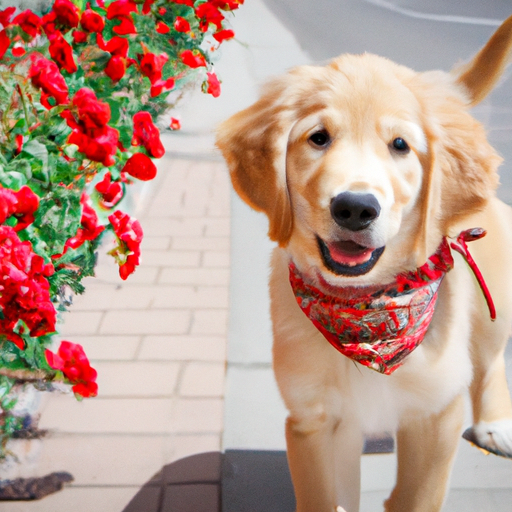Walking your puppy is not just about exercise; it’s also a critical part of training and socialization. This guide will take you through everything you need to know, from the first walk to choosing the right leash.
Understanding the Importance of Walking Your Puppy
Walking your puppy is essential for several reasons:
- Exercise: Puppies are bundles of energy. Walking helps burn off some of this energy, keeping your puppy calm and content.
- Training: Walks are an excellent opportunity to teach your puppy manners and obedience.
- Socialization: During walks, your puppy will encounter different sights, sounds, smells, people, and other animals. This exposure helps to shape a confident, well-behaved adult dog.
Preparing for the First Walk
Before embarking on your first walk, here are a few things to keep in mind:
- Vaccinations: Ensure your puppy is up-to-date with their vaccinations before taking them out. Young puppies are susceptible to diseases.
- Leash: Choose a comfortable, lightweight leash and collar that is suitable for your puppy’s size and breed.
- Identification: Ensure your puppy has proper identification, including a collar tag and microchip.
Training Your Puppy to Walk on a Leash
Leash-training may take some patience, but it’s worth the effort. Here are some steps to follow:
- Introduce the Leash: Let your puppy get used to the feel of the collar and leash.
- Start Indoors: Begin your leash training indoors where it’s quiet and there are fewer distractions.
- Use Treats: Encourage your puppy to follow you by using treats as motivation.
- Gradually Increase Distance: Start with short walks around the house, then gradually extend to the yard and beyond.
Setting a Walking Schedule
Consistency is key when it comes to training. Here’s a suggested walking schedule for your puppy:
| Age | Frequency | Duration |
|---|---|---|
| 8-12 weeks | 4 times daily | 5-10 minutes |
| 3-6 months | 3 times daily | 15-20 minutes |
| 6-12 months | 2 times daily | 20-30 minutes |
Remember, each dog is different. Adjust the schedule as necessary based on your puppy’s energy level and stamina.
Meeting Other Dogs
Socialization is a critical part of puppy development. Here are some tips for introducing your puppy to other dogs:
- Keep the leash loose to avoid transferring any tension to your puppy.
- Allow your puppy to approach the other dog in their own time.
- Keep the meeting short and positive.
Dealing with Walking Challenges
Walking can pose challenges, especially in the beginning. Here are some common issues and how to address them:
- Pulling on the Leash: If your puppy pulls, stop walking. Only progress when the leash is loose.
- Refusing to Walk: Try using toys or treats as motivation. If your puppy still refuses, they may be tired or scared.
- Chewing the Leash: Redirect your puppy’s attention with a toy or treat.
Maintaining Good Walking Habits
To maintain good walking habits, remember to:
- Keep walks enjoyable with games and rewards.
- Vary your walking routes to expose your puppy to new environments.
- Gradually increase the length and intensity of walks as your puppy grows.
FAQ
Q: When can I start walking my puppy?
A: You can start leash training at home as soon as your puppy is comfortable wearing a collar. However, avoid public places until your puppy is fully vaccinated.
Q: How far can my puppy walk?
A: The distance a puppy can walk will depend on their age, breed, and health. Generally, a 5-minute walk per month of age is a good rule.
Q: My puppy is afraid during walks, what should I do?
A: Try to identify what is scaring your puppy and slowly desensitize them to it. Keep walks short and positive, gradually increasing the duration as your puppy becomes more comfortable.
Q: What if my puppy won’t walk on a leash?
A: Patience is key. Start with short, indoor training sessions. Use treats and toys as motivation and make sure the leash and collar are comfortable.
Q: How often should I walk my puppy?
A: Puppies have a lot of energy and can require up to 5 walks a day. As your puppy grows, you can reduce the frequency and increase the duration of each walk.
Remember, walking is more than just a bathroom break for your puppy. It’s a time for exploration, training, and bonding. Happy walking!



